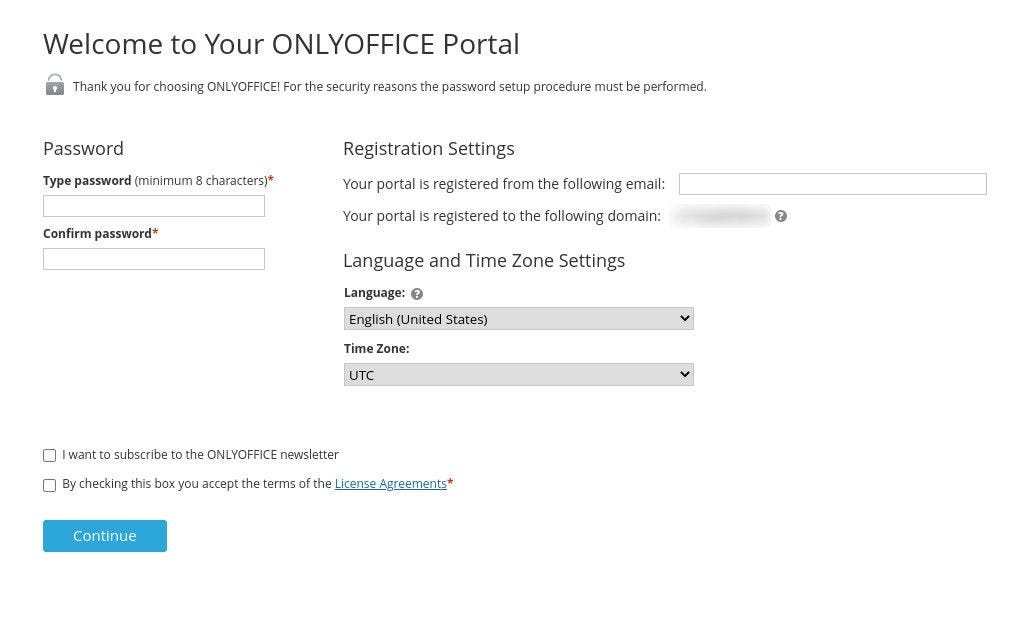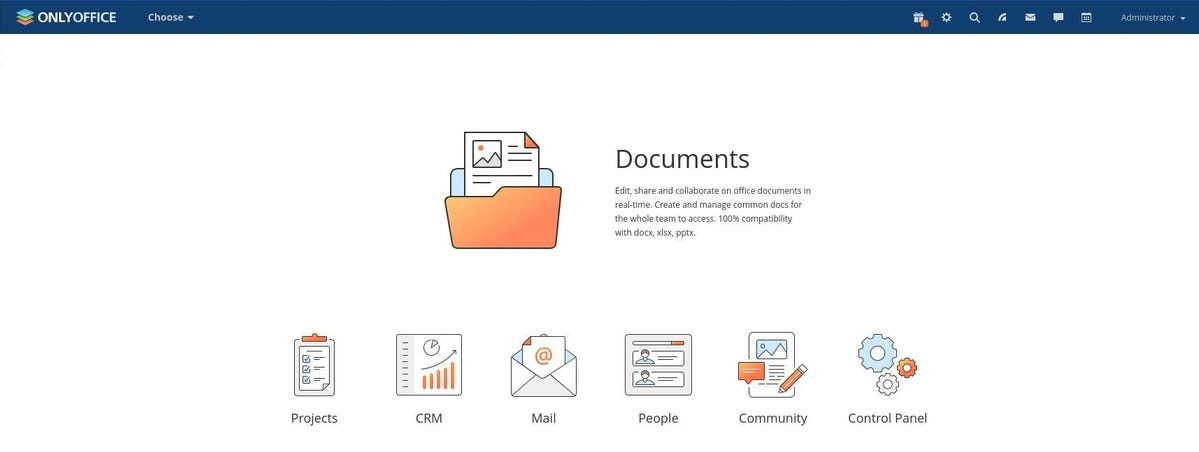The big advantage of installing an open source Linux operating system on your home network is that you can migrate many of the services you are used to working with at home. Imagine having your own internal cloud service with Nextcloud. You no longer need to rely on Google Drive, OneCloud or iCloud to store your most sensitive information.
Personally, there are documents and other files that I’m not afraid to host on Google Drive. And on the other hand, I have files that I prefer to keep in-house. And at the same time, I need to be able to access those files from anywhere on my home network. That’s why I use Nextcloud.
And what if you want a cloud office suite installed on your network, one that anyone in your household or small business could use? There is a solution for this too, called OnlyOffice, which bundles projects, CRM, mail, contacts and documents functions.
Even if you’re not a computer person, you just need to know how to copy and paste a few commands into the terminal. So, if you’re a bit curious, read on.
How to install Docker
Before you begin, you must have an instance of the Ubuntu server. One thing to keep in mind: make sure you have more than 40 GB of free space on your server.
Ready to copy and paste commands? Let’s get to work.
1. Login to Ubuntu Server
The first thing you need to do is connect to your Ubuntu Server instance.
2. Install dependencies
Install the necessary dependencies by pasting the following command in the terminal and pressing the key Entrance from your keyboard:
- sudo apt-get install ca-certificates curl gnupg lsb-release -y
3. Add the GPG key
GPG keys ensure that the software you are going to install is signed by the entity developing it (in this case, Docker).
For this, you need to add the official Docker GPG key by pasting the following command in your terminal and pressing the key Entrance from your keyboard:
- curl -fsSL https://download.docker.com/linux/ubuntu/gpg | sudo gpg –dearmor -o /usr/share/keyrings/docker-archive-keyring.gpg
4. Add Docker repository
To install Docker, we now need to copy and paste the command to install the official repository. This command is:
- echo “deb [arch=$(dpkg –print-architecture) signed-by=/usr/share/keyrings/docker-archive-keyring.gpg] https://download.docker.com/linux/ubuntu $(lsb_release -cs) stable” | sudo tee /etc/apt/sources.list.d/docker.list > /dev/null
5. Install Docker
You can now install Docker with the following command:
- sudo apt-get update && sudo apt-get install docker-ce docker-ce-cli containerd.io -y
6. Add your user to the Docker group
The final step in installing Docker is to add your user to the Docker group, so you can run Docker commands without root privileges (which would be a security issue). To do this, run the command below. Then log out and log back in to the server for the changes to take effect.
- sudo usermod -aG docker $USER
Deployment of OnlyOffice
We are now ready to deploy the OnlyOffice office suite. Fortunately, there is a very handy script that will take care of this. Download the script with the command:
- wget https://download.onlyoffice.com/install/workspace-install.sh
Run the script with the command:
- sudo bash workspace-install.sh
The script takes a long time to run. When it’s finished, give the containers time to install (about five minutes), then open a web browser and point it to http://SERVER (where SERVER is your Ubuntu server’s IP address) . If you don’t know the server’s IP address, you can locate it with the command:
You will see an installation progress indicator. This phase of the process can take up to 30 minutes. When it finishes, the installation window appears, where you need to create an administrator password, register an email address for OnlyOffice and select a language and time zone.
Once you’ve done that, accept the license terms and click Continue.

Be sure to use a strong and unique password for the admin user. Screenshot by Jack Wallen/ZDNET.
You will then see the main screen of OnlyOffice, where you can start working.

The OnlyOffice interface is very simple to use. Screenshot by Jack Wallen/ZDNET.
Congratulations, you have succeeded! You now have a cloud office tool that you can use within your own home network.
Source: ZDNet.com
